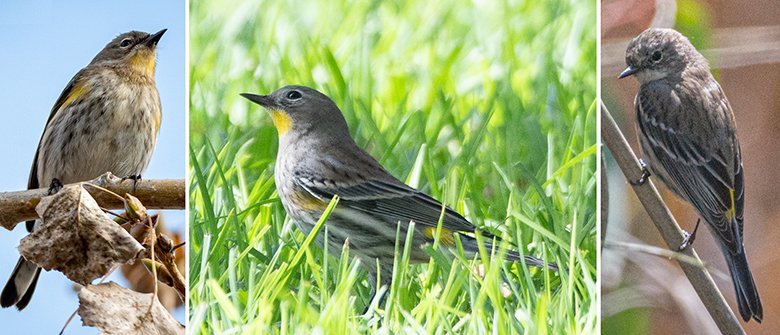
Yellow-rumped Warbler
The small, active Yellow-rumped Warbler is our most abundant winter warbler. It flits energetically through the tree canopy and shrubs throughout the Urban Forest from October to April when it then migrates north to coniferous forests in higher elevations to breed in spring and summer months.
True to its name, this warbler always shows a bright yellow rump-patch, earning the colloquial nickname “butter-butt” as it pulses through the trees, announcing its presence with an abrupt “CHWIT!” call.
Our local “Audubon” subspecies displays a distinctive yellow throat patch and yellow side patches in addition to its eponymous yellow-rump. Bright white markings as wing bars, under-tail spots and broken eye-rings help to confirm its identification even as winter plumage lessens the crispness and contrast of its coloration.
The Yellow-rumped Warbler enjoys a remarkably varied diet of insects, seeds and berries allowing it to thrive in very diverse habitats. This winter visitor is attracted to winter-flowering eucalyptus and bright red Toyon berries. Tall elderberry bushes offer a feast of tiny fruit and attracted insects. This diversity of diet has proven to be a veritable super-power for this migrant that can thrive in neighborhood parks, gardens and dense forests where social groups mingle contentedly. They can even be observed in mixed flocks with sparrows and finches foraging on the ground, trees and bushes. A broad flexible diet and gregarious nature have helped to make the Yellow-rumped Warbler one of North America’s most successful and abundant winter warblers.
Bird gallery



